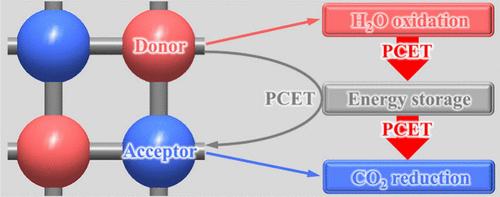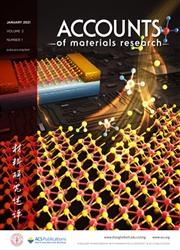Molecular Assembly of Functional Motifs for Artificial Photosynthesis
IF 14
Q1 CHEMISTRY, MULTIDISCIPLINARY
引用次数: 0
Abstract
Natural photosynthesis has produced most of the energy that fuels human society and sustains life on earth. However, with an ever-growing demand for energy, urgent efforts are required to develop artificial systems that mimic the essential processes of natural photosynthesis, including light harvesting/charge separation, photocatalytic water oxidation, energy storage, and catalytic CO2 reduction. Recent advancements have seen the development of nanoscale photoelectrochemical materials that integrate light absorbers with cocatalysts or redox units for artificial photosynthetic systems. However, the potential of molecular photoelectrochemical materials, which couple electron donor–acceptor (D-A) structures with catalytic or redox-active moieties into a periodic porous aggregate, remains largely underexplored. By combining D–A structures with redox moieties, these materials can enable solar-to-electrochemical energy storage process, while the further incorporation of catalytic sites can extend their application to photo(electro)catalytic water oxidation or CO2 reduction, thus enabling customized artificial systems. On the other hand, they can enhance energy efficiency by molecular-scale in situ photogenerated charge separation coupled with redox reactions─an exciton-involved redox mechanism─to circumvent the energy losses typically associated with charge carrier transport in nanoscale counterparts. Despite these merits, critical challenges remain with a limited understanding of the structure–functional motif relationship at the molecular level and a shortage of molecular assemblies to enable multifunctional motifs necessary for overall natural photosynthesis mimicry.

人工光合作用功能基因的分子组装
自然光合作用产生的大部分能源为人类社会提供了动力,并维持着地球上的生命。然而,随着对能源需求的不断增长,迫切需要开发能够模拟自然光合作用基本过程的人工系统,包括光收集/电荷分离、光催化水氧化、能量存储和催化二氧化碳还原。最近,人们开发出了纳米级光电化学材料,这些材料将光吸收剂与催化剂或氧化还原单元整合在一起,用于人工光合作用系统。然而,将电子供体-受体(D-A)结构与催化或氧化还原活性分子耦合到周期性多孔集合体中的分子光电化学材料的潜力在很大程度上仍未得到充分开发。通过将 D-A 结构与氧化还原分子相结合,这些材料可以实现从太阳能到电化学的储能过程,而进一步加入催化位点则可以将其应用扩展到光(电)催化水氧化或二氧化碳还原,从而实现定制的人工系统。另一方面,它们可以通过分子尺度的原位光生电荷分离与氧化还原反应(一种激子参与的氧化还原机制)来提高能量效率,从而规避通常与纳米级电荷载流子传输相关的能量损失。尽管有这些优点,但由于对分子水平上的结构-功能图案关系了解有限,以及缺乏实现多功能图案所需的分子组合以全面模拟自然光合作用,因此仍面临严峻挑战。
本文章由计算机程序翻译,如有差异,请以英文原文为准。
求助全文
约1分钟内获得全文
求助全文

 求助内容:
求助内容: 应助结果提醒方式:
应助结果提醒方式:


